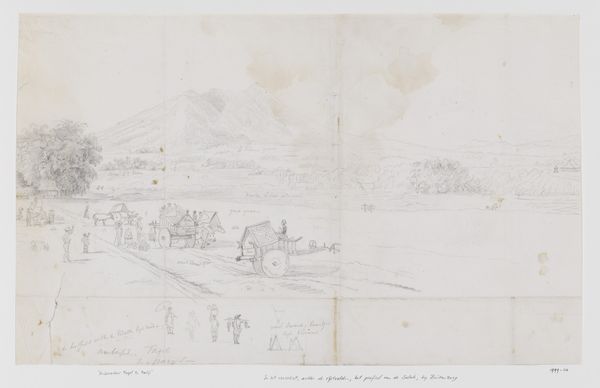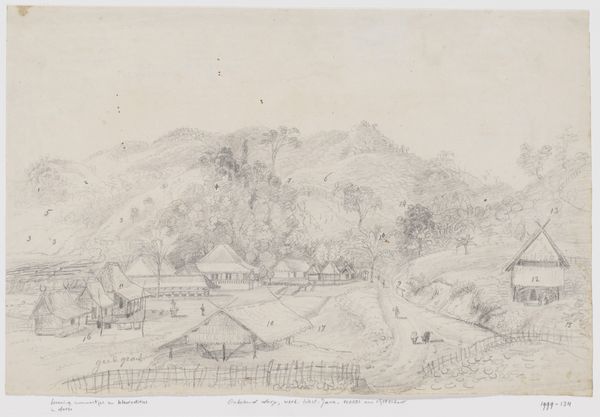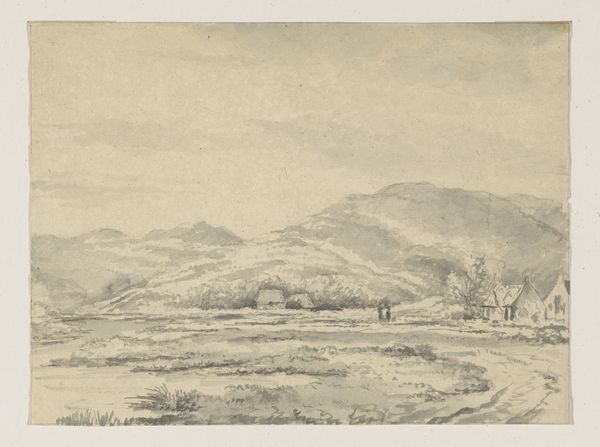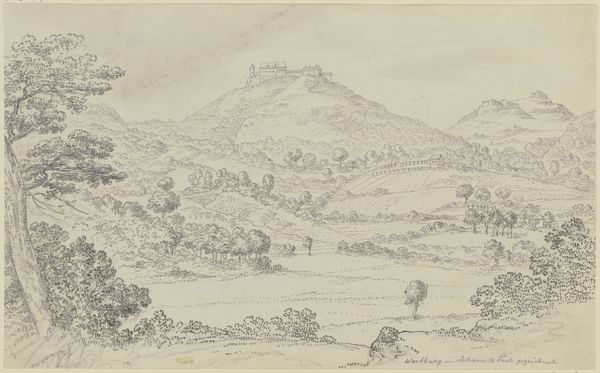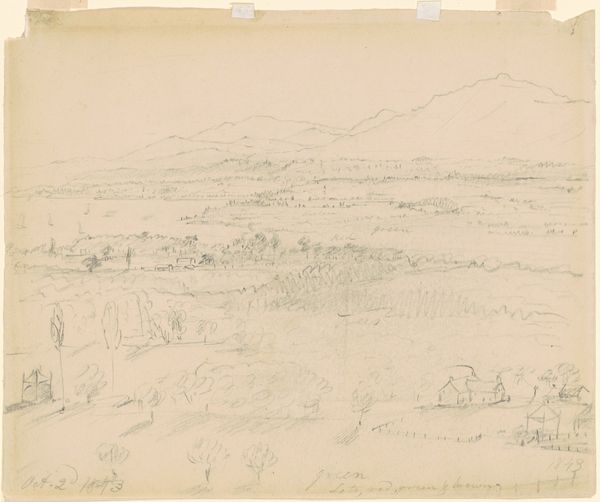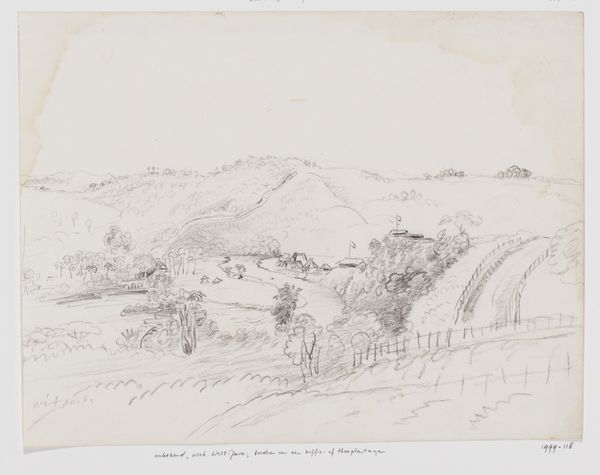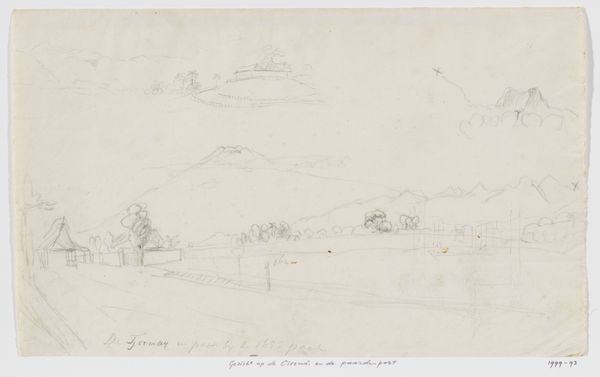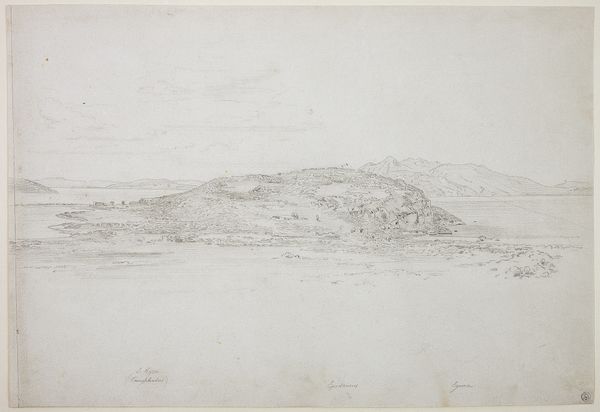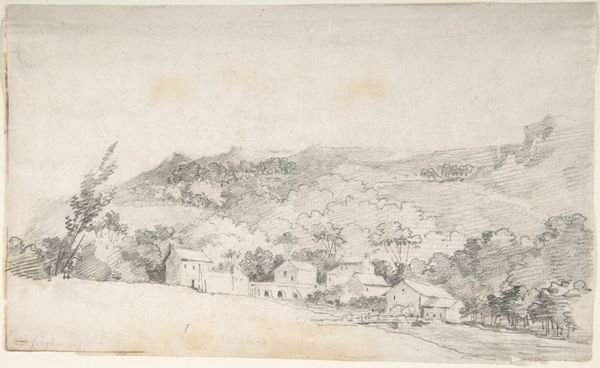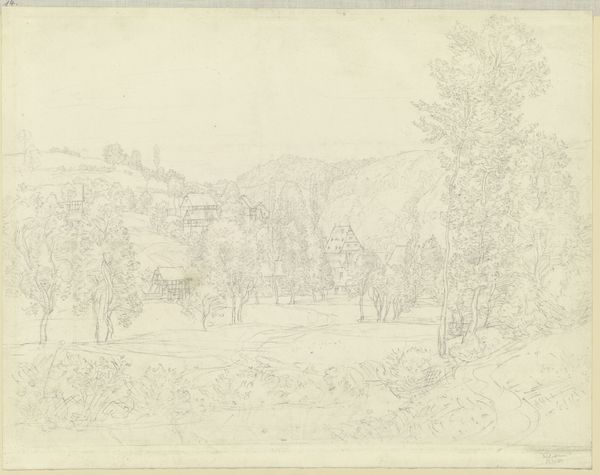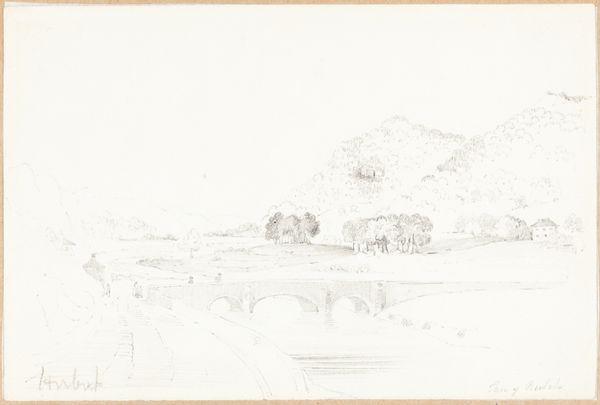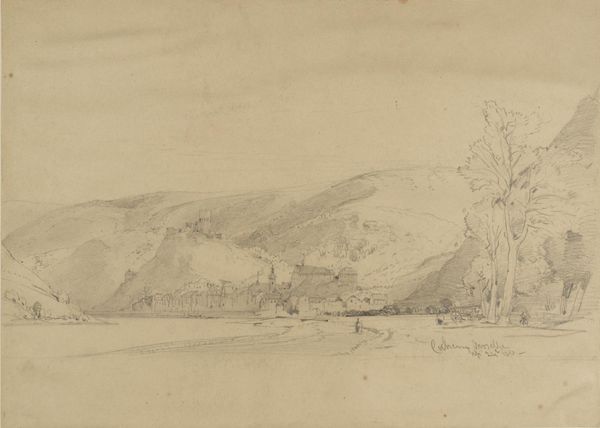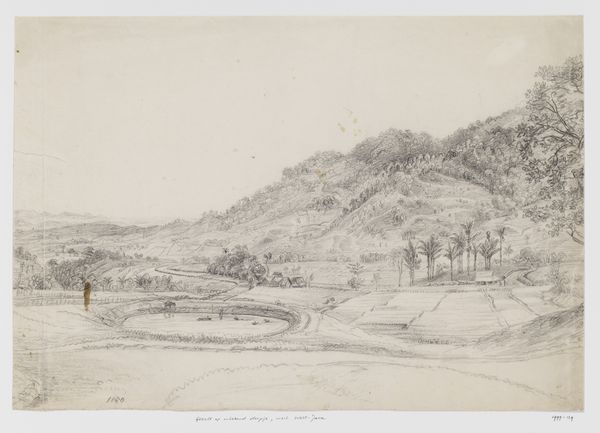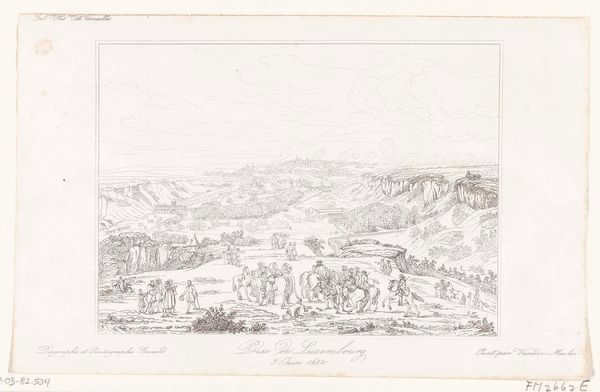
Gezicht op postweg en dorp Cidadap; residentie Cirebon, West-Java Possibly 1836
0:00
0:00
drawing, pencil
#
drawing
#
pencil sketch
#
asian-art
#
landscape
#
etching
#
pencil
#
pencil work
#
watercolor
#
realism
Dimensions: height 207 mm, width 342 mm
Copyright: Rijks Museum: Open Domain
Curator: Adrianus Johannes Bik’s “Gezicht op postweg en dorp Cidadap; residentie Cirebon, West-Java," possibly from 1836, offers us a glimpse into a landscape meticulously rendered in pencil. Editor: My initial impression is one of remarkable stillness. The soft pencil lines and muted tones give it an almost ethereal quality, like a memory fading into the distance. What stands out is the detail put into rendering the textures, considering its primary function probably wasn't "high art" but something more utilitarian. Curator: Precisely. Given Bik's involvement with the colonial administration in the Dutch East Indies, this drawing likely served a documentary purpose, capturing a specific location along a newly constructed post road. These roads profoundly shaped the movement of resources and labor within the colony, allowing easier access to markets and imposing greater control by authorities. The very act of charting and documenting this landscape signifies colonial power and its ambition of "managing" landscape and labour by establishing a physical network across the land. Editor: The composition is really fascinating as well. Note the terraced landscape--the layered rice paddies are subtly rendered, offering insight into agricultural practices, water management, and the organized labor involved in cultivating the land. I'm struck by how these materials --pencil and paper-- transform geographical, historical, and social contexts. The consumption and use of those specific materials were clearly linked to colonial systems and exploitation. Curator: The presence of the post road dominating the foreground reinforces the infrastructural imposition. Think about it: landscapes once shaped by indigenous communities, now transformed and standardized for colonial mobility. Bik, whether consciously or not, provides an objective-looking scene that ultimately is loaded with social meaning. The museum has a critical responsibility to make these stories and histories visible to the public. Editor: I think so, too. It challenges us to critically examine what it meant to visually survey the world, and how power is wielded not just through concrete actions, but through images and their circulation as well. It serves as a powerful reminder to dissect how landscapes become entwined with structures of labour, capital, and control. Curator: Yes, seeing Bik's work within the broader context of colonial landscape representation, we gain a fuller comprehension of not just the aesthetic, but of its political function. Editor: Absolutely, it really emphasizes how the making and looking at landscape images during that time became essential instruments in visualizing control of these areas.
Comments
No comments
Be the first to comment and join the conversation on the ultimate creative platform.
